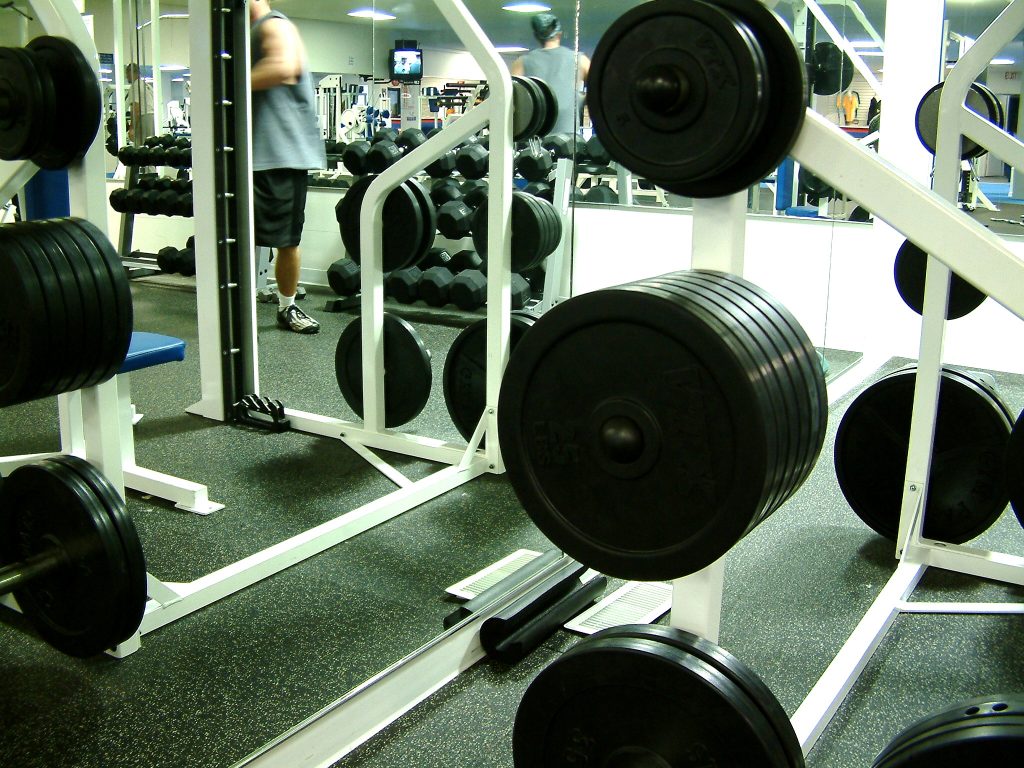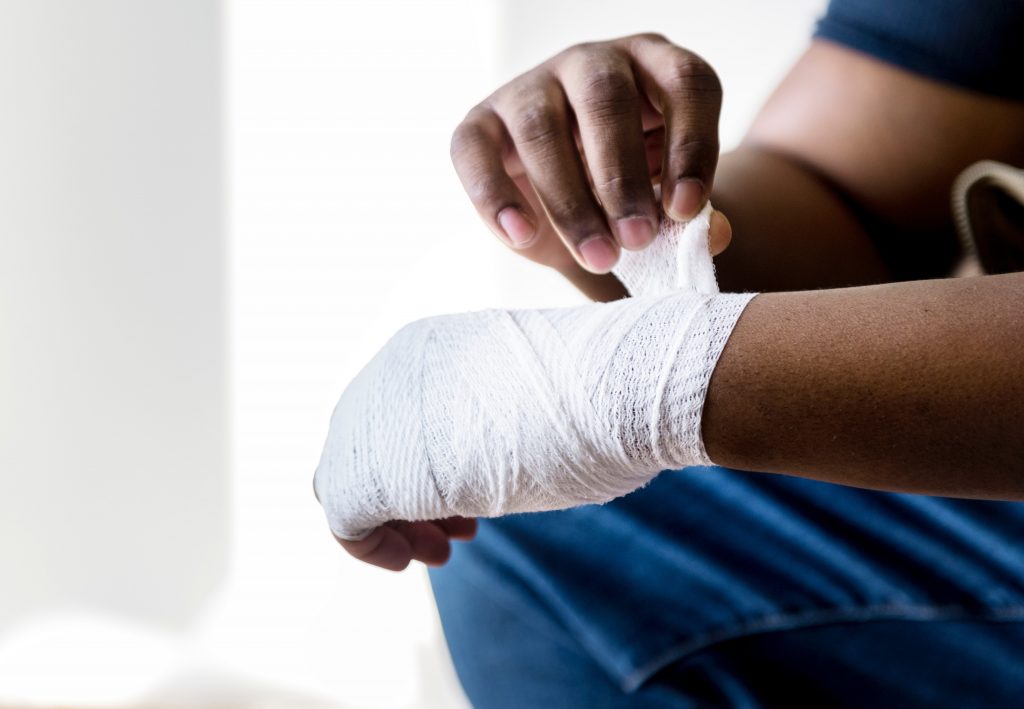 If injured on someone else’s property, it is important to know what has to be proven in order for a legal case to go forward. If the injury occurs from a defective structure, then the owner of the premise must have constructive knowledge of the defectiveness. The factors a court evaluates when the defective structure is on public property differ from those of a private owner. So, what happens if you are injured on someone else’s property?
If injured on someone else’s property, it is important to know what has to be proven in order for a legal case to go forward. If the injury occurs from a defective structure, then the owner of the premise must have constructive knowledge of the defectiveness. The factors a court evaluates when the defective structure is on public property differ from those of a private owner. So, what happens if you are injured on someone else’s property?
A judgment by the 19th Judicial District Court granting the East Baton Rouge Parish Housing Authority (“the Authority”) a summary judgment motion and dismissing the claim by Andrew Blevins (“Blevins”) and his employer’s insurance company, Stonetrust, was affirmed by Louisiana First Circuit Court of Appeal. Summary judgment is granted when there is no real dispute as to the facts of the case, and the party who requested the summary judgment, known as the mover, is entitled to win the case as a matter of law La. C.C.P. art. 966.
Blevins was working at Electrical Building Service, LLC (“EBS”) and while on the Authority’s property, he stepped into a hole that was hidden by tall unkempt grass, causing him to fall and fracture his ankle. Blevins alleged that the Authority was aware or should have been aware of the giant hole that injured him. When a premise owner should have known about a defect, the knowledge is called “constructive notice.” If constructive notice is shown, the Authority is liable for damages. Here, those damages included medical fees and workers’ compensation benefits that Stonetrust wanted as a reimbursement payment.
 Louisiana Personal Injury Lawyer Blog
Louisiana Personal Injury Lawyer Blog


 Have you ever been tempted to take a sick day, just because you need a break? Have you ever called in or left early because you are feeling under the weather and you would not be able to forgive yourself if you exposed the entire office to the bug you caught? Although many employees may stretch the truth on sick days sometimes, there are occasions where it becomes irresponsible and unprofessional. One Louisiana man attempted to test the boundaries of worker compensation when he requested medical payments for his sickness. So, how can you determine if someone is faking symptoms in a workers compensation case?
Have you ever been tempted to take a sick day, just because you need a break? Have you ever called in or left early because you are feeling under the weather and you would not be able to forgive yourself if you exposed the entire office to the bug you caught? Although many employees may stretch the truth on sick days sometimes, there are occasions where it becomes irresponsible and unprofessional. One Louisiana man attempted to test the boundaries of worker compensation when he requested medical payments for his sickness. So, how can you determine if someone is faking symptoms in a workers compensation case?  In order for a court to assess a fair amount of money to be paid for one’s injuries, it is necessary for the injured party to present sufficient evidence to justify that amount. Without sufficient evidence, it is entirely possible for a court to award an incorrect amount of money to the injured party. A trial court is generally allowed a certain amount of discretion (or freedom) to make a proper judgment. It must, however, come to a reasonable conclusion. An appellate court may alter the award if the judgment is incorrect based on the evidence provided. In 2016, the First Circuit Court of Appeal decided to do just that in a case that involves lost wages over an inability to audition for new jobs.
In order for a court to assess a fair amount of money to be paid for one’s injuries, it is necessary for the injured party to present sufficient evidence to justify that amount. Without sufficient evidence, it is entirely possible for a court to award an incorrect amount of money to the injured party. A trial court is generally allowed a certain amount of discretion (or freedom) to make a proper judgment. It must, however, come to a reasonable conclusion. An appellate court may alter the award if the judgment is incorrect based on the evidence provided. In 2016, the First Circuit Court of Appeal decided to do just that in a case that involves lost wages over an inability to audition for new jobs.  Summary judgment is a judgment entered by a court for one party and against another party without a full trial. More specifically, summary judgment may be granted where the legal claim or cause of action can be decided upon certain facts without a trial. Can you receive summary judgement in a negligence case against a squat machine manufacturer?
Summary judgment is a judgment entered by a court for one party and against another party without a full trial. More specifically, summary judgment may be granted where the legal claim or cause of action can be decided upon certain facts without a trial. Can you receive summary judgement in a negligence case against a squat machine manufacturer? What happens when a verdict that the employee is entitled to Workers’ Compensation Benefits has been handed down by the Office of Workers’ Compensation, but the awarded medical benefits have not and are not being paid? Generally, an employee will move for penalties and attorney fees to be imposed on the employer or its insurer for failure to pay the benefits. Under Louisiana law, awarded medical benefits must be paid within sixty days of the employer or insurer receiving notice that the employee has been awarded medical benefits.
What happens when a verdict that the employee is entitled to Workers’ Compensation Benefits has been handed down by the Office of Workers’ Compensation, but the awarded medical benefits have not and are not being paid? Generally, an employee will move for penalties and attorney fees to be imposed on the employer or its insurer for failure to pay the benefits. Under Louisiana law, awarded medical benefits must be paid within sixty days of the employer or insurer receiving notice that the employee has been awarded medical benefits.  What happens with Workers’ Compensation Benefits when you are still able to work, but cannot make your pre-injury wage? Are you entitled to the difference in pre-injury and post-injury wages? Or are you out of luck? Supplemental earning benefits (“SEB”) are paid at two-thirds of the difference between what a person earned before their on-the-job injury and after their on the job injury, whether working or not. SEB’s are available to an individual who was injured at work and is unable to earn at least 90 percent of their pre-injury salary due to the injury.
What happens with Workers’ Compensation Benefits when you are still able to work, but cannot make your pre-injury wage? Are you entitled to the difference in pre-injury and post-injury wages? Or are you out of luck? Supplemental earning benefits (“SEB”) are paid at two-thirds of the difference between what a person earned before their on-the-job injury and after their on the job injury, whether working or not. SEB’s are available to an individual who was injured at work and is unable to earn at least 90 percent of their pre-injury salary due to the injury.  On the job injuries often present complicated healthcare-related decisions., especially when it comes to pain management. What happens when an insurer denies a successful treatment option? In the case of one Caddo Parish employee, securing effective pain management became an equally difficult encounter.
On the job injuries often present complicated healthcare-related decisions., especially when it comes to pain management. What happens when an insurer denies a successful treatment option? In the case of one Caddo Parish employee, securing effective pain management became an equally difficult encounter.  Worker’s compensation protects workers from unexpected accidents by providing for their medical care and lost wages if ever they suffer an incapacitating accident. And in most instances, a worker’s compensation claim will cover any subsequent accidents which arise from the work-related injury. But when the link between a new accident and the original work-related one is too far removed, an injured worker may have difficulty advancing his claim. For example, can you file a workers compensation claim for an at-home accident?
Worker’s compensation protects workers from unexpected accidents by providing for their medical care and lost wages if ever they suffer an incapacitating accident. And in most instances, a worker’s compensation claim will cover any subsequent accidents which arise from the work-related injury. But when the link between a new accident and the original work-related one is too far removed, an injured worker may have difficulty advancing his claim. For example, can you file a workers compensation claim for an at-home accident? No one can ever truly be prepared for the death of a loved one. It can present many unforeseen challenges, especially when complicated by the process of obtaining survivors’ benefits.
No one can ever truly be prepared for the death of a loved one. It can present many unforeseen challenges, especially when complicated by the process of obtaining survivors’ benefits.  Can an inmate be awarded damages from an injury caused by the employees of the correctional facility? According to the 5th Circuit Court of Appeal, the answer is yes. Mr. Miller was an inmate at Elayne Hunt Correctional Facility when an employee of the facility pulled him out of his bunk and threw him on the ground. Miller sued Captain Credit and the State of Louisiana for negligence under state law as well as violations of the 8th amendment under 42 U.S.C. §§
Can an inmate be awarded damages from an injury caused by the employees of the correctional facility? According to the 5th Circuit Court of Appeal, the answer is yes. Mr. Miller was an inmate at Elayne Hunt Correctional Facility when an employee of the facility pulled him out of his bunk and threw him on the ground. Miller sued Captain Credit and the State of Louisiana for negligence under state law as well as violations of the 8th amendment under 42 U.S.C. §§